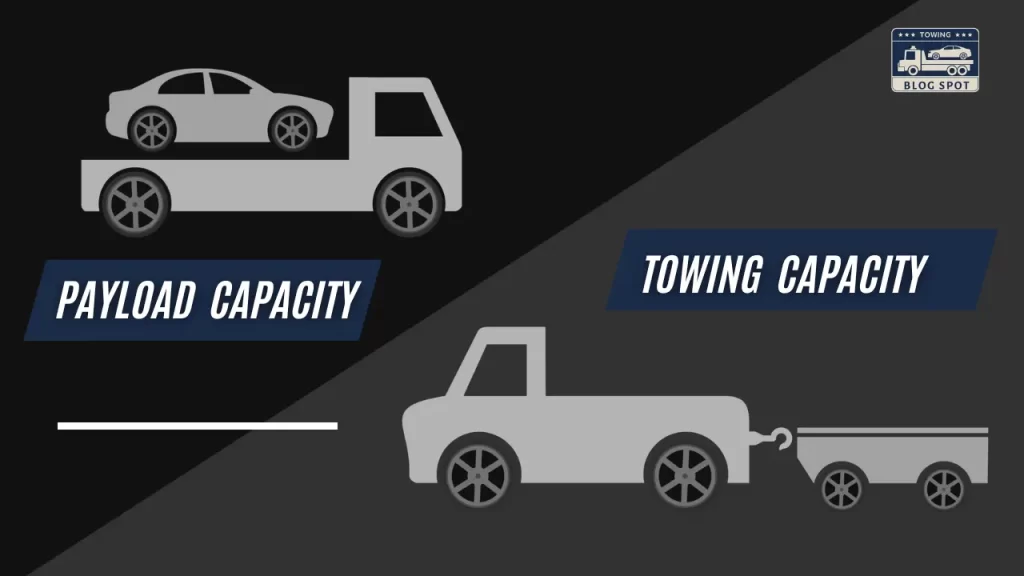Have you ever been in that situation when you needed to tow something and wanted to know if your vehicle was capable of handling the task? Towing more than what your car is rated for can result in extremely serious damage to vehicles.
Uncertainty can be very frustrating, especially when all you want is a simple solution to the problem. But don’t worry. We are here to help you!
Calculating your vehicle’s towing capacity is way easier than you think. Once you learn the way, you will never have to guess again.
Stay with us, and we’ll teach you all that you need to know about towing capacity as simply as possible. Now, let’s begin and get you completely ready before you drive!
What is Towing Capacity?
The towing capacity is the total amount of weight that your vehicle can effectively pull behind it, such as a trailer or caravan. Understanding this limit ensures that you neither destroy your car nor cause accidents.
Difference between Towing Capacity and Payload Capacity:

| Towing Capacity | Payload Capacity |
| The weight your vehicle can pull behind it | The weight your vehicle can carry inside |
| For example: This is the towing capacity, which tells you how much weight a trailer can pull. | For example: Payload capacity tells us how much weight one can put in the bed and car cab. |
Misconceptions about Towing Capacity
Some things need to be clarified about towing capacity.
- It is absolutely incorrect that bigger vehicles always tow more, as some smaller ones will be designed to pull more than their bigger trucks.
- Adding accessories, such as a more powerful hitch, doesn’t increase the towing capacity as specified by the manufacturer.
- Towing Capacity never includes a payload capacity. These are different terms. Towing capacity refers to pulling weight, while the payload is about carrying the weight inside a vehicle.
Key Terms and Concepts Related to Towing Capacity

Knowing the following terms will help you to safely and effectively tow
Gross Vehicle Weight Rating (GVWR): This is the maximum weight your vehicle can be allowed to handle, including vehicle weight, passengers, cargo, and even fuel. Driving over this limit can damage your vehicle and make driving unsafe.
Gross Combined Vehicle Weight Rating (GCWR): It is the maximum weight of your vehicle plus whatever the trailer has. That means the total weight of your car, passengers, cargo, fuel, and the weight of the trailer, plus anything else in the trailer. Staying within this limit ensures safe towing.
Gross Trailer Weight Rating (GTWR): It is the minimum weight a trailer is allowed to weigh, including its weight and that of cargo it may carry. The manufacturer of the trailer sets this weight.
Curb Weight: The total weight of your vehicle, including standard equipment, fluids, and a full tank of fuel without passengers or cargo.
Dry Weight: This is the weight of the vehicle without fluids, fuel, passengers, or cargo.
Tongue weight: This refers to the downward force that the trailer’s hitch makes on your vehicle. It is usually about 10-15% of the total weight of the trailer.
How to Calculate Towing Capacity?

Understanding your vehicle’s towing capacity is important for proper towing. Here are some steps to find out how much weight your vehicle can tow safely.
Step 1: Find the Gross Combined Weight Rating (GCWR)
GCWR stands for the maximum weight of your vehicle and trailer combined, which can safely be towed. You will find this number in your vehicle owner’s manual, on an information label inside the driver door frame, or it can be obtained by calling the manufacturer. You can also calculate the GCWR by using this formula.
GCWR=GVWR+GTW
Step 2: Find the Curb Weight of Your Vehicle
Curb weight is the weight of your vehicle when it is empty but with all standard equipment and a full tank of fuel. This question can normally be answered by looking into the owner’s manual or on the manufacturer’s website. This can also be found in this formula.
Curb Weight=GVWR−Payload Capacity
Step 3: Calculating towing capacity.
Subtract the curb, passengers and cargo weight of your vehicle from the GCWR to find the maximum weight your vehicle can tow.
Towing Capacity = GCWR – (Curb weight + Passengers weight + Cargo weight)
Example: Considering an example will make the process easier for you.
Suppose
- GCWR: 20,000 pounds
- Curb Weight: 5,000 pounds
- Passengers and Cargo: 1,000 pounds
Towing Capacity = 20,000 pounds – ( 5000 pounds + 1000 pounds)
Towing Capacity = 14,000 pounds
In this example, you can safely tow up to 14,000 pounds.
Maximum Towing Capacity Chart of Some Vehicles
The maximum towing capacities of some important towing vehicles are below. However, note that the towing capacities do vary depending on the engine type, drivetrain, and towing packages installed on a particular vehicle. It is always recommended to refer to a specific manufacturer’s specifications for actual towing capacity.
| Vehicle Model | Maximum Towing Capacity |
|---|---|
| Ford F-150 | 13,500 lbs |
| Chevrolet Silverado 1500 | 13,300 lbs |
| Ram 1500 | 12,750 lbs |
| Toyota Tundra | 12,000 lbs |
| Nissan Titan | 9,290 lbs |
| Ford Ranger | 7,500 lbs |
| Chevrolet Colorado | 7,700 lbs |
| Toyota Tacoma | 6,500 lbs |
| GMC Sierra 1500 | 13,000 lbs |
| Honda Ridgeline | 5,000 lbs |

Can the Towing Capacity of a Vehicle be Increased?
The towing capacity of any vehicle is set by its manufacturer when designing and equipping the vehicle. You cannot change the official limit. However, some upgrades can also make your vehicle’s towing capability much better within the current limit.
- Installing a higher-rated hitch increases stability while towing.
- Upgrading the brakes of the towing vehicle to heavy-duty brakes increases safety.
- Evenly spread the trailer weight for better control and less strain on the rear axle.
Online Towing Calculators
These are websites where you enter the details of your vehicle to find out how much weight it can tow. For example, the TowCarCalculator enables you to enter your car and trailer details to check if they match well together.
How to Calculate Towing Capacity by VIN
It is easy to find out the capacity of your vehicle’s towing based on its Vehicle Identification Number (VIN). Here is how you do it:
- Find VIN on the dashboard, in the driver’s side door frame, or in vehicle documents.
- Enter your VIN on websites like Towing Capacity by VIN for towing details.
- Consult the vehicle’s owner’s manual for towing specifications, which can be found in the towing or specifications section.
- If online tools or the owner’s manual don’t provide the information, contact the Manufacturer or Dealer. They can give towing capacity based on your VIN.

Conclusion:
Towing can seem difficult, but it can become easier and safer if you know the towing limit and follow the right steps. Always check the towing capacity of your vehicle, proper use of equipment, and balance the loads. These precautions will protect your vehicle and ensure smooth towing.
Frequently Asked Questions (FAQs)
What happens if you exceed towing capacity?
Exceeding your vehicle’s towing capacity can lead to serious issues such as Vehicle Damage, Safety Risks and Legal Consequences.
Can every vehicle tow a trailer?
Not all vehicles are designed for towing. Some need structural strength, sufficient engine power, or the capacity of their brakes. Always consult your vehicle’s owner’s manual to find out if towing is recommended or not.
Does towing affect the vehicle’s warranty?
Towing within the manufacturer’s specified limits does not void your warranty. However, if you exceed these limits or tow improperly, you could lose your warranty coverage.
What is the “85% rule” in terms of safe towing?
In this rule, the weight of your fully loaded trailer should not be more than 85% of your vehicle’s kerb weight. This is only a guideline to offer improved stability and greater safety.
What does a 3500 pound Towing Capacity Mean?
A towing capacity of 3500 pounds means that your vehicle will safely tow a trailer, boat, or any other load whose total weight is up to 3500 pounds.

How to Calculate Towing Capacity ?